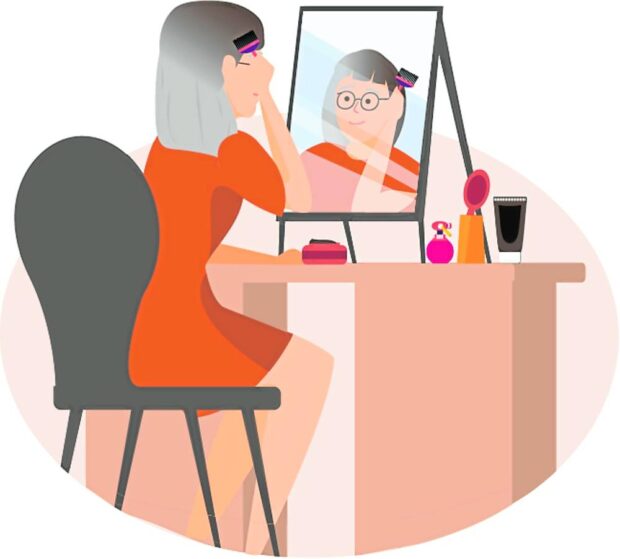
F or four years, I embraced the graying process. Even before the pandemic, when we were all holed up at home, it was liberating for me not to have to color my hair anymore. I even wrote an article here about all the fabulous reasons I chose to grow out my grays (“Gray is my new black,” 2019).
In my late-twenties, as a corporate front-liner with more disposable income, I started getting monthly dye jobs. As a work-at-home hermit, looks no longer mattered. The decision to be gray was a relief; I faced my aging self in the mirror every day, grateful for the time I still get to do what I do and hyperaware that it was all fleeting. It helped put things in perspective, which things were indeed “big deals” and which was “small stuff.”
The choice to go gray is like the corpse pose or savasana in yoga, which I used to think was skippable and useless as a busy youngling who just needed to get her workouts in. It’s just lying down for several minutes, flat on your back; what’s the point?
Savasana is great for stress relief and muscle tension but is the most challenging pose for practitioners who have trouble shutting their minds off. It can be deeply uncomfortable; the ideas enter one’s mind when given space and time to be open. Yogis are encouraged to just observe the thought, accept its presence and then let it go.
Tim Senesi is a fixture in my daily YouTube yoga ritual. Of savasana, he said that we practice the “death/dying pose” as a reminder for us not to become so attached to this physical form and that practicing this daily can help to shift our attitudes and outlooks.
Vanity
But while I was ready to let go of that aspect of vanity, I learned that my persona has other stakeholders, too. A dear family member once counseled me that regardless of whatever “cause” I was fighting for, I should dye my hair for my husband, as it reflects his ability to care for his wife. It didn’t matter; he treated me the same whether I was at my fittest with salon-ready hair or chunkier with silver streaks.
What threw me off was during online schooling, my son said he was being made fun of for having a mom who looked like a grandma. I suppose it was the season of yo’ momma jokes. I tried to get him to shrug it off, but the teasing ate away at his patience. I tried to get him to understand that it was just hair and that I was still strong. But I could tell he was ashamed of my appearance.
The kicker came from my daughter, who adored me whatever I did. In her eyes, I had “can-do-no-wrong” status. To her, I was always “the most beautiful,” and I reveled in it until she tearfully admitted that my hair turning white freaked her out. She said that seeing me get older made her think that I was going to die very soon.
Ageism
There is no reasoning with little ones with such big feelings. I dyed my hair the next day. Their approving smiles welcomed me when I got home. “You did this for me?” my daughter said, shocked but grateful. “You look great, Mom,” said my son, patting my head.
I used to think that only women had to endure the ageism of salt-and-pepper locks. After all, graying males are called silver foxes and described as “distinguished,” while women are deemed to have “let themselves go.”
But my father, who still teaches at a graduate school of business, has had to dye his full head of hair with strategically placed blacks. Clients he met for consulting gigs doubted whether he could last entire teaching sessions or workshops. It didn’t matter that he had stellar credentials, was still ridiculously sharp and could power-walk 12,000 steps through subways in Osaka; they couldn’t get over his white hair.
So I’m back to more frequent salon visits. I try to enjoy the temporary respite from the busy day and reposition it as some sort of savasana. I can’t imagine doing this for much longer; the process still makes me feel like a sad fraud. But my kids will grow up soon, and then the color of my hair will no longer matter. The time will come sooner than I think.
—CONTRIBUTED